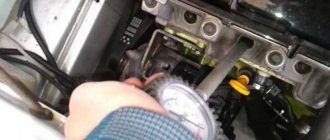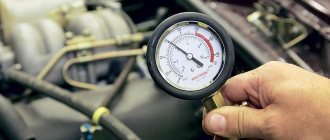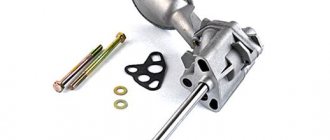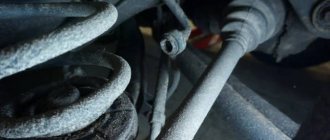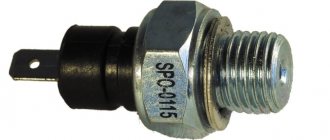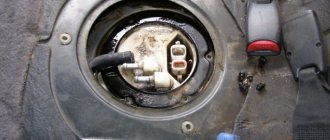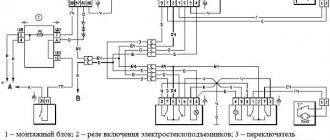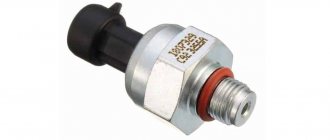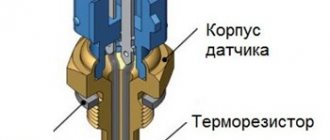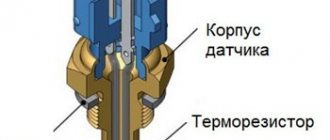The compression indicator is one of the most important parameters in the operation of an internal combustion engine. With its help, you can determine the serviceability of parts of the cylinder-piston group, the degree of wear of the CPG or piston rings. This indicator depends on the compression ratio of a particular engine (the ratio of the working volume to the piston stroke length). The more boosted the engine is with a higher compression ratio, the higher its compression parameters.
Over time, the CPG parts wear out, gaps appear, and the machine loses its power. The total loss from such work can reach 15-25 percent. The engine runs intermittently, does not display its rated data, and exceeds average fuel consumption. Therefore, there is a need to check the compression in the cylinders, and this can be done with your own hands, without having unique knowledge.
Methods for checking compression in cylinders
You can measure pressure in the field with only a set of wrenches and a rag on hand. But such a measurement will only answer the question of whether it is present in the cylinders or not. It is impossible to measure compression correctly and set its exact value. Checking engine compression is a simple procedure that you can do yourself. However, this will require a special device - a compression meter.
Main regulatory indicators
All necessary data can be taken from the maintenance documentation for a particular car brand.
Basic data, taking into account testing only on a warm engine, is presented below.
Standard compression level:
- Modern gasoline cars that are filled with A-95, 98 gasoline - from 11 to 14 atmospheres (range of readings from 0.5 to 1.0 atmospheres);
- Old cars filled with gasoline A - 80, A-92 - from 9 to 10 atmospheres (range of readings from 0.5 to 1.0 atmospheres);
- Modern diesel cars - about 45 atmospheres (range of readings from 2 to 3.0 atmospheres);
- Old diesel cars - about 28 atmospheres (range of readings from 2 to 3.0 atmospheres).
Depending on the installed diesel engine, standard readings can vary from 28 to 45 atmospheres.
By checking engine compression, the following faults can be diagnosed.
Devices for measuring compression
To check the compression value in the cylinders we need a compression gauge. This is a device consisting of several parts. These include:
- special pressure gauge. It is better to take a part with a scale marked from 0 to 35 Bar. This parameter can be measured in atmospheres, kgf/cm2. or MPa, but the generally accepted unit of measurement is Bar, equal to 0.99 atmospheres;
- a flexible hose that screws directly into the pressure gauge. Equipped with a pressure relief valve. This will help measure compression on both gasoline and diesel internal combustion engines;
- one or more attachments that are screwed into the engine in place of the spark plugs;
When choosing a product on the market, it is advisable not to buy the cheapest meters. As a rule, their durability is short. But if you are not a car mechanic and do not plan to use the device often, purchasing a professional kit is also pointless. You should pay attention to models in the mid-price segment. The price of such devices is 750-1100 rubles.
| Device brand | Minimum cost, rub. |
| ZMZ-406 | 510 |
| Will measure | 625 |
| Avtodelo | 670 |
| Friend PRO | 750 |
| Friend | 1100 |
| FuelMerPro VAZ, GAZ TopAuto | 1290 |
| JTC | 3135 |
Compressometers
Category
Packaging is more profitable! Price per pack of 4 pcs.: RUB 2,272. Price per one. product: 568 rub. 655 rub.
Packaging is more profitable! Price per package of 4 pcs.: RUR 3,476. Price per one. product: 869 rub. 966 rub.
Packaging is more profitable! Price per pack of 4 pcs.: RUB 3,292. Price per one. product: 823 rub. 884 rub.
Packaging is more profitable! Price per pack of 4 pcs.: RUB 3,608. Price per one. product: 902 rub. 1002 rub.
Packaging is more profitable! Price per pack of 4 pcs: 2,404 rub. Price per one. product: 601 rub. 659 rub.
Packaging is more profitable! Price per pack of 4 pcs.: RUB 2,608. Price per one. product: 652 rub. 719 rub.
Packaging is more profitable! Price per pack of 4 pcs.: RUB 3,044. Price per one. product: 761 rub. 818 rub.
Preparing the engine for measurements
The operating instructions for the VAZ 2106, 2107, 2108 models do not contain specific recommendations after what mileage it is necessary to measure compression. However, it is worth making it a rule to carry out this procedure along with replacing the candles. Standard spark plugs last 15-20 thousand km. When replacing parts, it would be useful to measure the pressure in the cylinders - this will help to identify malfunctions in time. There are signs when this procedure should be carried out earlier:
- the engine does not start well when cold;
- the motor does not produce the required power and traction characteristics;
- one or more cylinders do not work (troit);
- increased fuel consumption;
- The oil guzzling has begun, and bluish smoke is pouring out of the exhaust pipe.
Before measuring compression, you need to prepare the engine. It should be heated to an operating temperature of 70-90 degrees. If it is a two-stroke boat unit - up to 60-80 degrees. We stock up on a standard set of keys, as well as a special spark plug attachment. Now everything is ready for measurements.
Case from practice
Initial data:
- Engine: 1ZZ-FE (1.8 l);
- Symptoms: increased oil consumption (approximately 1 liter per 400 km).
Measurement results (4 cylinders): 15, 14.5, 15 and 14.5 bar. It is known that the standard value is 13.2 bar. After measuring the compression, the cylinder head was removed, but there was still oil in the cylinders. The conclusion here is obvious: the oil scraper rings were stuck, which led to oil consumption. In general, high compression rates are not a guarantee of engine health.
Instructions for checking engine compression
The following provides step-by-step instructions for determining compression on a gasoline carburetor or injection engine.
- Warm up the engine.
- Remove the spark plugs from the spark plugs.
- For models with a carburetor, you need to reset the switch terminal.
- Disconnect the fuel pump hose to prevent the supply of fuel to the combustion chambers. You can take measurements without disconnecting the fuel line, but then gasoline will get on the cylinder bore and can remove the oil film, which will subsequently lead to scuffing.
- We unscrew all the spark plugs from their seats to provide the crankshaft with minimal rotational resistance.
- Screw the hose of the measuring device into the threaded connection.
- The assistant sits behind the wheel, presses the gas pedal all the way and turns the starter. The pressure gauge needle will begin to oscillate and stop at a certain position. To correctly determine compression, you need to limit yourself to the first four strokes. That is, the engine must complete one working cycle. With the engine running, the exhaust valve will then open and the pressure will drop. Therefore, even a faulty unit can “inflate” good values.
- We check all four cylinders and analyze the results.
The procedure for determining compression on diesel units is fundamentally similar to the instructions, but there are several points:
- Diesel engines have glow plugs. Compression must be checked through these technological holes.
- Power is supplied not by a carburetor or injector, but by a high-pressure fuel pump (HPF). If the engine is equipped with an archaic mechanical injection pump, then you can use a shut-off valve and then remove the fuel line. To turn off an electrical device, simply remove the corresponding fuse from the unit.
It is also possible that it is simply impossible to measure compression on a hot engine. This happens when:
- the car simply won’t start;
- The motor has been removed from the vehicle.
In this case, you have to measure the compression when cold. If there is no battery, a starter is connected. The procedure is absolutely no different from the one described above. However, the readings of the compression device will a priori be lower due to the presence of thermal gaps in the motor. It is worth subtracting 25-30% from the optimal value.
If the unit does not have a starter, then the compression can be measured using a special pneumatic tester. The device forces air into the cylinder and creates maximum pressure there. And the second dial shows the amount of leakage.
If you don’t have specialized instruments at hand, you can check for compression at home. A thick rag is inserted into the spark plug well and the starter is turned. A working engine with proper compression will simply push it out due to the created pressure. Some craftsmen even create their own homemade compression meters, but their serviceability is questionable.
The video below will help you understand all the nuances of the procedure in more detail.
Air leaks
Compressed air tends to leave the cylinder, and this is natural. Accordingly, air leakage is possible through anything that is not hermetically sealed.
Consider the situation of loss of compression due to air leakage.
In order to identify the cause, you must do the following:
- Align the cylinder slightly short of TDC;
- Put the car on the handbrake and engage either 4th or 5th gear;
- Open the oil filler neck;
- Direct a stream of compressed air into the cylinder with a pressure of at least 2, but not more than 3 atmospheres. To do this, you can use either a compressor or an inflated car bladder.
What to pay attention to:
- Hissing and air escaping through the spark plug hole located nearby, which indicates a “breakthrough” of the cylinder block gasket;
- The intake valve is not tightly closed if air hissing from the carburetor is released;
- Air leaking out of the oil filler neck means things are bad. This means that either the piston has burned out or a crack has formed in it;
- If air comes out through the exhaust pipe, check the exhaust valve, it is most likely burnt out.
Also, minimizing air leakage is achieved when:
- The cylinder is completely round, without scratches on its surface;
- The valves are perfectly ground and fit securely to the seats;
- The piston ring locks have minimal clearances;
- The piston rings seal tightly against the cylinder liners and lie tightly in their grooves.
Data analysis
If you do everything correctly, you will be able to take correct values. Different types of engines have their own standards, with which it is worth comparing the results obtained.
| Motor type | Minimum value, Bar | Optimal indicator, Bar |
| Old gasoline engines with a compression ratio of up to 8.5 | 11 | 13 |
| New engines, with a compression ratio of 8.5 | 12 | 14-15 |
| Diesel units | 22 | 30 |
Troubleshooting
Now we know how much Bar should be in the cylinders. If the compression measurement shows lower values, then it is necessary to troubleshoot the parts of the cylinder-piston group.
- The most harmless is the occurrence of piston rings after inactivity. It is treated by simply pouring decoking agent into the spark plug channels with a syringe;
- piston burnout. Diagnosed by probing the piston head with a thin wire through the hole;
- deformation, burnout or stuck valve. The cylinder simply does not work at low speeds, and the pressure value is critically low;
- worn rings and valve stem seals. Diagnosed using a nutrometer. Signals include increased oil consumption or blue exhaust smoke;
- a crack in the bridge or a chip in the piston. The oil enters the combustion chamber, where it burns, producing bluish exhaust smoke. The part must be replaced.
Of course, when serious breakdowns are diagnosed, the car body should be sent for service and defective parts should be replaced, but timely diagnosis will help to avoid unnecessary expenses. And measuring compression in the cylinders is just such a procedure.
Hot engine measurement options
There are several types of measuring compression on a warm engine; sometimes drivers use the technique of combining these methods to obtain more accurate data.
Measurements with open throttle
It is more convenient to carry out measurements with the damper open with an assistant who will depress the pedal. Low readings for this measurement will indicate loose valves, defects or wear on the camshaft cam, or a leaky cylinder head gasket.
Read: How does ABS work on a car?
